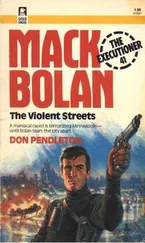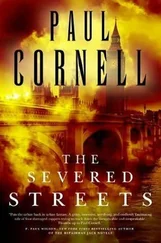Smialek provided some counterweight with the statement that the babysitters’ explanation “is not consistent with the injuries… the child died as the result of an action on some other person’s part.” The ME did concede, however, that the death could have possibly resulted from accidental human intervention, but there was no way to tell. Trying hard for some middle ground, Smialek carefully explained that a medical ruling of homicide does not necessitate a criminal charge of murder. Meanwhile, the police department’s spokeswoman summed things up cogently by telling reporters: “She was not murdered. That is all I have to say.”
All in all, the Tiffany Woodhous investigation ended awkwardly for Worden, with a standing ruling of homicide for which no criminal charge would ever be filed. It also left the homicide unit and the ME’s office struggling for common ground in the glare of publicity, and it was, in retrospect, about par for the kind of year Worden was having.
Now, three weeks later, the Big Man is back down on Penn Street with another body. And who but Julia Goodin is waiting for him in the autopsy room.
The two detectives watch their Jane Doe from Billyland go beneath the overhead camera in the outer room, with Worden asking the attendant for particular attention to the treadmarks on the left arm and upper torso. Fifteen minutes later, they follow their victim into the autopsy room, where the external examination begins in the first available space, which happens to be between a fire victim from Prince George’s and an auto fatality from Frederick.
Doc Goodin is nothing if not cautious. And after the Tiffany Woodhous mess, she’s now working with even more deliberation. She moves slowly around the corpse, noting the location of the treadmarks, of the bruises and contusions, of every visible injury. She notes each on the top sheet of her clip-pad, which is itself a silhouette of a prone female form. She carefully checks the hands for trace evidence, then scrapes the fingernails, though she can see nothing in the scrapings to indicate that the victim fought against any assailant. She pays particular attention to the victim’s shins and thighs, looking for telltale bumper marks to indicate that she was struck while standing and then run over. Nothing there either.
Worden points out the finger-pattern bruising on each arm. “Like she was grabbed first?” he asks.
Goodin shakes her head. “Actually,” she says, “those are contusions that could have been caused when the vehicle went over her.”
Worden mentions the earrings, both found on either side of her head along with small clumps of hair. Could they have been pulled out by an angry assailant?
“More likely they were pulled out when her head was run over.”
And the torn shorts? The torn panties? No, says Goodin, holding the two together to show that they both tore on the same side, at the point that would be weakest as the wheels rolled over her.
“The tires could have done that.”
Worden sighs, steps away, and looks at Brown. Both detectives can now see where they’re going with this thing; they may as well let the good doctor work and adjourn to the Penn Restaurant.
“Well,” says Worden, “we’ll be across the street and back in a half hour or so.”
“You could make it an hour.”
Worden nods.
The Penn Restaurant is mostly a lunchtime venue, a Greek family-owned establishment that draws most of its business from the hospital complex across the street. The decor is blue and white, heavy on the Formica, with the requisite number of wall murals depicting the Acropolis and the Aegean coastline. The gyros are exceptional, the breakfasts, acceptable, and the beer, cold. Brown orders the steak and egg combo; Worden, a beer.
“How do you want the steak cooked?” asks the waitress.
“He’d like it rare,” says Worden, smiling.
Brown looks at him.
“Go on, David, get it bloody and show us how it doesn’t bother you.”
“Medium,” says Brown.
Worden smiles and the waitress wanders back toward the kitchen. Brown looks up at the older detective. “What do you think?”
“I’ll give you odds right now she won’t make it a murder,” Worden tells him.
“Not after what you put her through,” says Brown dryly. “You went and ruined her for the rest of us.”
“Yeah, well…”
They eat and drink in silence. Finishing his steak, Brown looks again at Worden.
“You know what I’m going to have to do?” he says. “I’m going to have to go out with her and show her the scene.”
Worden nods.
“You think that’ll help?”
Worden shrugs.
“I know it’s a murder, Donald.”
Brown finishes his coffee and snuffs out his second cigarette. Back in May, he was down to a couple of smokes a day on the Johns Hopkins clinic plan. Now, whenever he coughed, he sounded like a garbage disposal chewing on a spoon.
“You ready?”
“Yep.”
They cross the street, heading down the ramp and up the loading dock entrance, past the bulkhead door that marks the entrance to the decomp room; there the nastiest cases are examined apart from the others to keep life on Penn Street as bearable as possible. Even from the loading dock, there is still the suggestion of unbelievable stench.
Inside the autopsy room, Julia Goodin is finishing her examination. As expected, she tells the detectives that nothing about the body points conclusively to a homicide. Particularly important, she says, is the absence of any visible contusions on the legs. In all probability, she explains, the woman was already lying down on that lot when she was run over. The toxicology will take weeks, but both Goodin and the detectives can guess that the results will come back positive for alcohol, if not for drugs as well. After all, she’s a billy girl found dead on a Sunday morning; chances are she saw the inside of at least one or two bars the previous night. There’s no semen, no direct evidence of sexual assault.
How do we know, Goodin argues, that she didn’t just fall down drunk before someone ran her over? And what if one of those tractor-trailers didn’t see her lying there and backed up to that loading dock?
Worden gives her the traffic man’s opinion on the tires, suggesting that it’s a sports car rather than any kind of truck.
“If a semi-truck rolled over her,” says Worden, “it’d do a lot more damage than that, wouldn’t it?”
“That’s hard to say.”
Dave Brown brings up the missing shoe. If she just fell down drunk, wouldn’t that sandal be somewhere nearby? Intriguing thought, Goodin agrees, but she remains unconvinced, countering that if the victim was drunk, she could have lost the sandal two blocks away from where she eventually fell.
“Look, guys, if you bring me something conclusive, I’ll rule it a homicide,” she says. “Right now, I have no choice but to pend it.”
Later that afternoon, Dave Brown returns to Penn Street and collects the good doctor for a tour of the crime scene, arguing once again that the isolated lot just isn’t suited to the ordinary hit-and-run. Goodin listens carefully, scouts the scene and nods her understanding, but still refuses to call the death a murder.
“I need some solid evidence either way,” she insists. “Bring me something definitive.”
Brown accepts defeat graciously, and though he is still certain that the case is a murder, he understands on some level that it ought to be pended. Three weeks ago, after all, Goodin called a murder only to be overtaken by new evidence; now, the same bunch of cowboys are asking her to call another one without definitive proof. It’s probably a murder, Brown reasons, but right now it probably should be pended.
Nonetheless, Goodin’s ruling creates another kind of problem: A case in which the pathologist’s finding is being pended is not, to the police department’s way of thinking, a murder. And if it isn’t a murder, it doesn’t go up on the board. And if it isn’t up on the board, it doesn’t really exist. Unless the primary detective takes it on himself to pursue a pended case, it has every chance of falling through the cracks the moment that detective gets a call that is a murder. If this case goes down, it will go down because Dave Brown somehow managed to follow through, and Worden, for one, has doubts about Brown’s ability to do so.
Читать дальше












